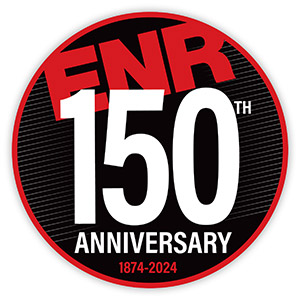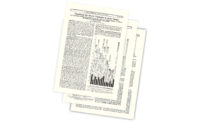
While it’s common to take the U.S. Interstate Highway System for granted, it had a long gestation period before coming to fruition beginning in the mid-20th century.
Until the 1930s, most American roads were made of dirt. Roadbuilding was mostly the jurisdiction of township and county officials, and the federal Office of Public Roads was a small division in the U.S. Dept. of Agriculture, focused primarily on improving farm-to-market roads. One of the earliest proponents of a national highway system was Edward J. Mehren, a civil engineer and the editor of Engineering News-Record.
In a speech advocating a “suggested national highway policy and plan” that was given before a joint meeting of the American Association of State Highway Officials and the Highway Industries Association , Mehren called for creation of a Federal Highways Commission to build a national network of roughly 50,000 miles of highways—consisting of five east-west and 10 north-south routes.
Mehren, who was serving simultaneously as a vice president of the highway industries group, noted how counties had replaced towns in managing road construction and operation. “The question now comes whether another step should not be taken … in favor of the construction and maintenance by the federal government of a highway system that shall transcend state bounds,” he said.
While the group, made up of suppliers of cement, crushed stone, road machinery, resoundingly endorsed his idea, the state highway officials did not. They were still in the process of consolidating their power over town and county officials and resented the federal highway engineers’ subtle but tight-fisted oversight of state highway plans through disbursement of federal-aid funds.
World War I chilled the budding push for matching federal funds to the states for highway construction. Advocates for long-distance roads lost out to those still favoring rural farm-to-market roads in the 1920s.
The arrival of the Great Depression brought federal New Deal programs with funding that resulted in an upsurge in roadbuilding. But highways built at the time were not seamless—they included stop signs, traffic lights and railroad crossings.
There was a brief juncture in the late 1930s when the tide seemed to turn. Thomas MacDonald, chief of the Bureau of Public Roads from 1919 to 1953, was a powerful bureaucrat. President Franklin Roosevelt summoned him to the Oval Office in 1938, handed him a hand-drawn map with three north-south and three east-west routes and requested he explore the viability of their construction. Roosevelt also proposed creating a new agency to seize private property needed for rights-of-way—an idea that the Republican National Committee labeled as socialism.
With the advent of World War II, it took two more titanic battles on Capitol Hill before the system was born.
President Dwight Eisenhower’s initial proposal in 1954 envisioned a network financed by tolls or increased gas taxes. Many governors were outraged, as they considered highway construction their exclusive domain. Retooled congressional legislation in 1955 was voted down over antipathy to public debt.
The following year saw the American Road Builders Association present a compromise plan on tire taxes. The revised federal bill established the Highway Trust Fund, a pay-as-you-go plan with funds from a fuel tax, excise taxes on trucks and buses and an annual registration fee for trucks. It passed both houses of Congress with huge majorities.






Post a comment to this article
Report Abusive Comment